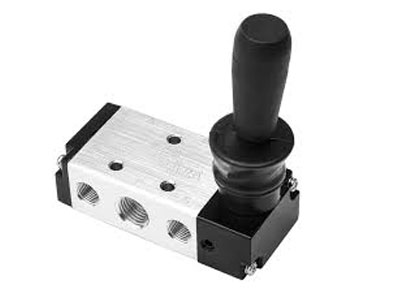What Is The Most Common Type Of Directional Control Valve?
Key Takeaway
The most common type of directional control valve (DCV) is the 4/3-way valve. This valve has four ports and three spool positions, allowing it to control the flow direction between two actuators or cylinders. It’s widely used because of its versatility in directing fluid flow in multiple directions.
Other types of directional control valves include the 2-way valve, which has two ports for simple on/off control; the 3-way valve, which diverts flow between two paths; and the 5-way valve, which adds an exhaust port for more control options. There are also poppet valves for high-pressure applications and rotary valves for precise flow control. DCVs are essential in many industries for switching the flow direction and regulating the start, stop, or pause of fluid movement.
Overview of Common Types of Directional Control Valves
There are several common types of directional control valves, each designed to handle specific requirements. These include:
1. 2/2 Valves: These valves have two ports and two positions, making them simple on/off controls used in basic applications.
2. 3/2 Valves: With three ports and two positions, these valves are often used in systems requiring switching between two states, like the forward and reverse movement of cylinders.
3. 4/2 Valves: These valves are used for more complex systems with four ports and two positions, enabling operations like actuating double-acting cylinders.
4. 5/2 Valves: These are frequently used in more intricate systems involving multiple fluid pathways and can control two flow directions with five ports.
Each type offers flexibility, with the 5/2 valve standing out as a widely used option in industrial automation due to its versatility.

Features and Benefits of the Most Widely Used Valves
The 3/2 valve is often seen as the most common due to its simplicity and reliability in basic applications. Key features include:
Simple Operation: Easy to operate and install, with fewer components.
Cost-Effective: Generally cheaper than more complex valves, making it ideal for basic on/off control in pneumatic systems.
Durability: Reliable in a wide range of environments with low maintenance requirements.
On the other hand, the 5/2 valve offers more functionality, making it suitable for advanced systems. Its benefits include:
Multiple Ports: Allows control over more complex airflow patterns.
Flexibility: Used in a variety of industrial applications where precise control of actuators is needed.
Increased Control: Provides better control over double-acting cylinders, making it essential for automation systems.
Applications Where These Valves Are Most Effective
Both the 3/2 and 5/2 valves have crucial roles in numerous industries:
3/2 Valves: Common in simple systems such as air brakes, basic actuators, or applications that require basic on/off switching of airflow.
5/2 Valves: Widely used in automated assembly lines, robotics, and applications that need precise control of double-acting cylinders, such as controlling the movement of robotic arms or conveyor belts in manufacturing.
The choice between these valves depends on the complexity and needs of the system, with 5/2 valves being the preferred choice in most automated environments.
Differences Between Popular Directional Control Valves
The main differences between common directional control valves include:
Port Count: 3/2 valves are simpler with fewer ports, while 5/2 valves are more complex, offering additional ports for more flexibility.
Application Complexity: 3/2 valves are used for basic applications, while 5/2 valves serve more complex industrial systems requiring multiple flow paths.
Control Type: 3/2 valves typically offer manual, electric, or pneumatic actuation, while 5/2 valves often rely on solenoid-based or pneumatic actuation for automated systems.
Factors That Influence the Selection of Directional Control Valves
When choosing a directional control valve, several factors come into play:
System Complexity: Simpler systems may only require 3/2 valves, while complex systems may necessitate the use of 5/2 valves for precise control.
Flow Requirements: The amount of flow and the required directional control will influence the valve type selection.
Pressure and Temperature: Depending on the system’s pressure range and environmental conditions, valves must be selected to meet specific durability standards.
Cost: Budget constraints may lead to the choice of simpler valves for less demanding applications.
Conclusion
The 3/2 valve and 5/2 valve are the most common types of directional control valves due to their versatility, reliability, and cost-effectiveness. While the 3/2 valve is ideal for simpler on/off applications, the 5/2 valve is better suited for complex automation and industrial systems. Understanding their differences, benefits, and applications is crucial for selecting the right valve to ensure efficient system operation and performance.

